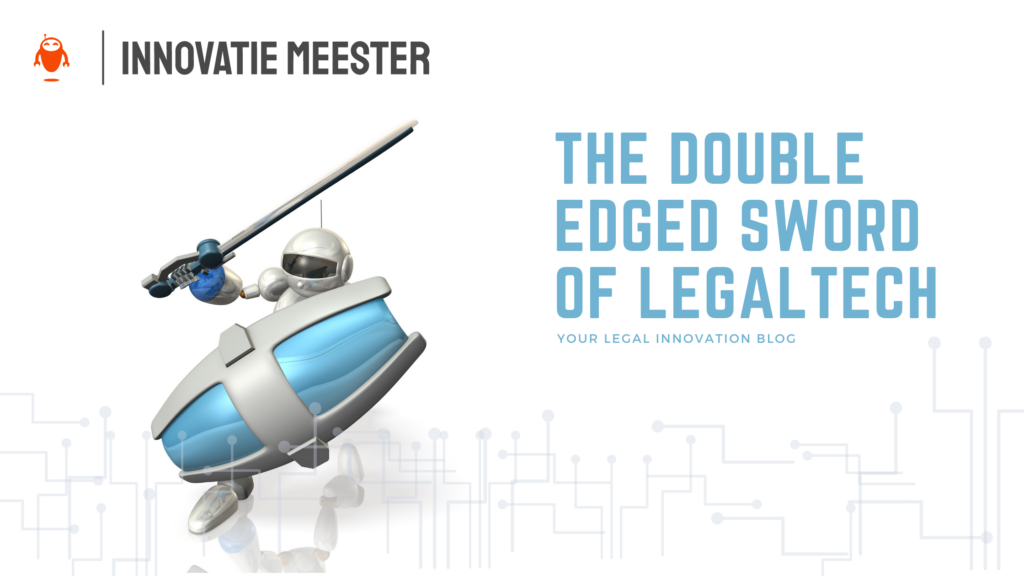Law firm innovation is not going fast enough. If you look at public opinion, law firms and their traditional partner model, billable hour model, risk averse mentality and so on are to blame. We expect law firms to innovate, but is it fair to ask law firms to innovate if the client is the one that benefits most?
Law firm innovation
Before we dive into the question, let’s see what law firm innovation is in my eyes. Law firm innovation is not about complete new business models or fully automated legal advice through robots. We don’t expect law firms to invent new products, or become a new “Law Firm bnb” or something. But we do expect them to use innovative solutions (invented by others) in their daily work. Law firm innovation as I see it is about law firms breaking from tradition to improve the way their legal service is delivered to their clients. And most of that is possible through using legal technology. But who is paying and who benefits?
The costs of law firm innovation

Law firm innovation is about law firms that invest in new ways of delivering their services to their clients. Some of these investments are free, if it is just about changing the way you communicate or if you decide to put your client first. But when legal technology is involved, this often comes with high costs.
1. The cost of investing in legal technology
The first costs law firms encounter are investment costs. Law firms will need to invest time (resources) and money (out of pocket investment) to select and implement new legal technology. Knowing what to buy is not easy. Legal technology suppliers are everywhere, often over promising results. It takes time to find and select the right technology, while lawyers are normally not experts in these fields. And if you have found a new technology that looks promising, you wull need to invest real money and time in buying and implementing that technology.
2. The cost of running legal technology
Once legal technology is implemented, law firms will need to pay recurring license fees to the technology supplier to use the software. And extra costs are made to integrate the software with other important tools in the organisation. And to keep all tools up and running, and help lawyers use the technology, more resources come into play, with costs of their own.
3. The cost of innovating with legal technology
The buying and implementing part of legal technology is relatively easy. And their are tools that are plug and play. But it is not innovation yet. The real value of legal technology comes when law firms start building better ways of service delivery with that new technology. We will see real law firm innovation when law firms have created automated workflows, models and playbooks that add value to the daily work of lawyers. We will see law firm innovation when machines are trained to deliver accurate results so lawyers will not have to do that manual work anymore. But building workflows, models and playbooks or training machines requires valuable time of lawyers and legal engineers. Time these resources can’t spend on billable hours. Or if it can be outsourced, this comes with yet another investment.
Law firms in general carry the costs of law firm innovation: the costs of investing in legal technology, the cost of running legal technology and the costs of innovating with legal technology. Clients don’t.
The benefit of law firm innovation
Most technology focus on reducing manual labour, for example cutting down review time or sifting through thousands of documents so lawyers don’t have to. This is for the benefit of the client, who will see a reduction of billable hours. The law firm does not really benefit from reduced billable hours, right? Perhaps one can say that a law firm benefits from these types of legal technology because it frees up valuable time of a lawyer that can be spend on higher valued work. Or a lawyer can do more work with legal technology that he could not do (by himself) before. Or you can argue that a law firm will benefit because of a happier client or a better competitive edge. But in general, law firms do not benefit from reduced billable hours. Clients do.
The double edged sword
This is the double edged sword of legal technology: We ask law firms to invest time and money in legal technology, to carry the cost of running legal technology and spend valuable time to make the technology work. And as a result of having that technology, the law firm will see a reduced amount of billable hours. So the question is: is it fair to ask law firms to innovate if clients benefit and law firms do not?
Win-win

I think the answer should be “Yes, but…. “. “Yes”, because it is fair to ask law firms to keep up with technology, as in the end they work for their clients and they should deliver services to the clients that are valued by the client. Non value added work like manual labour when technology could do this more efficiently does not feel like work that is valued by the client. And technology will bring value for them as well, albeit for the longer term: a better client relationship, perhaps a competitive edge or new revenue models.
And then the “But…”. I think we have a better chance for success if we create a win-win situation on the short term: when clients benefit and law firms benefit. If law firms do not carry all the costs of investment, or all the cost of running technology for their clients by themselves, it would be a less bitter decision for law firms to spend valuable time on acquiring, implementing and adopting technology. And when law firms make these decisions more easily, we might just be accelerating law firm innovation. A win-win situation.
I am curious to hear what you think. We are all in this journey together.
Tjeerd van Ginkel is a freelance innovation consultant who is on a mission to help to change the legal industry. Curious to find out more? Schedule an introduction call via the button below, or fill in the contact form.
If you want to receive more of these stories, subscribe here to receive your Legal Innovation Inspiration:
